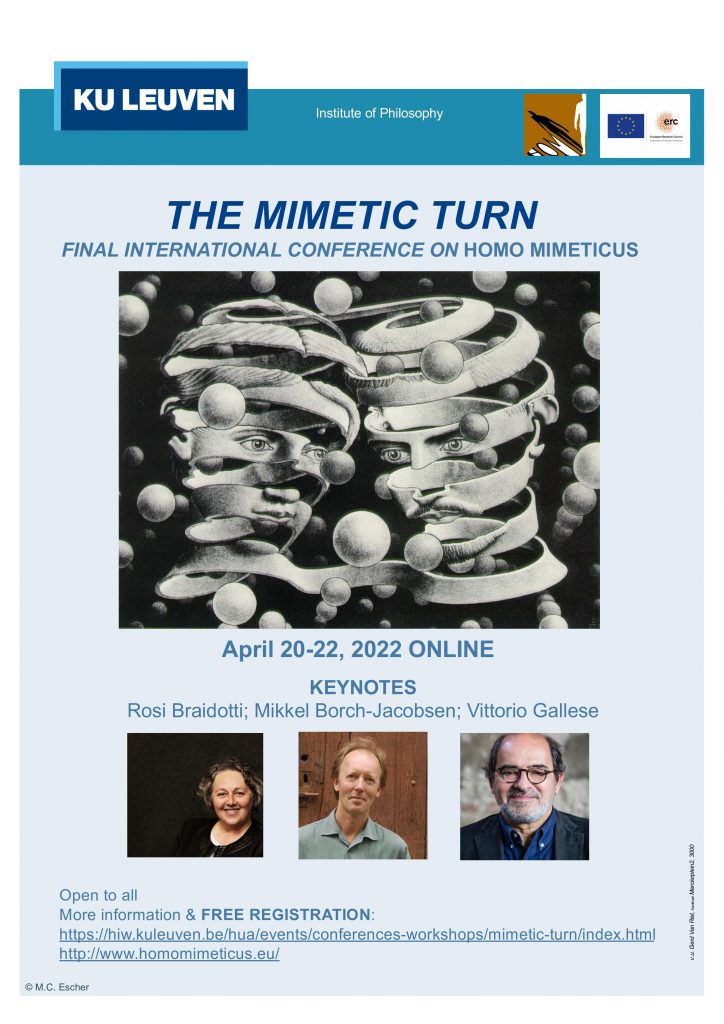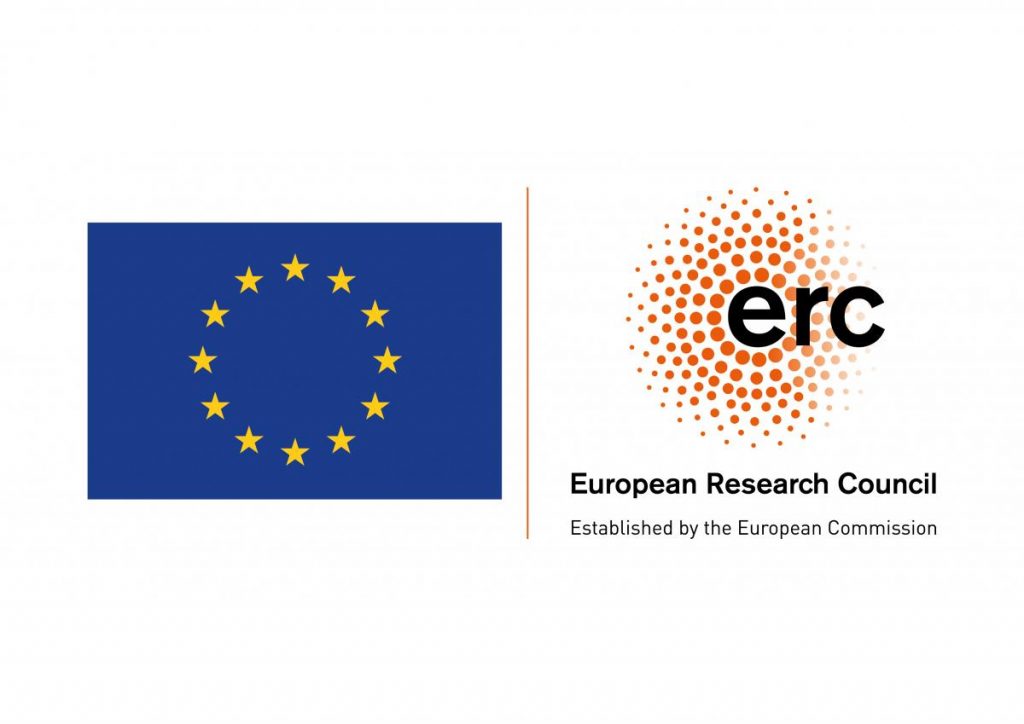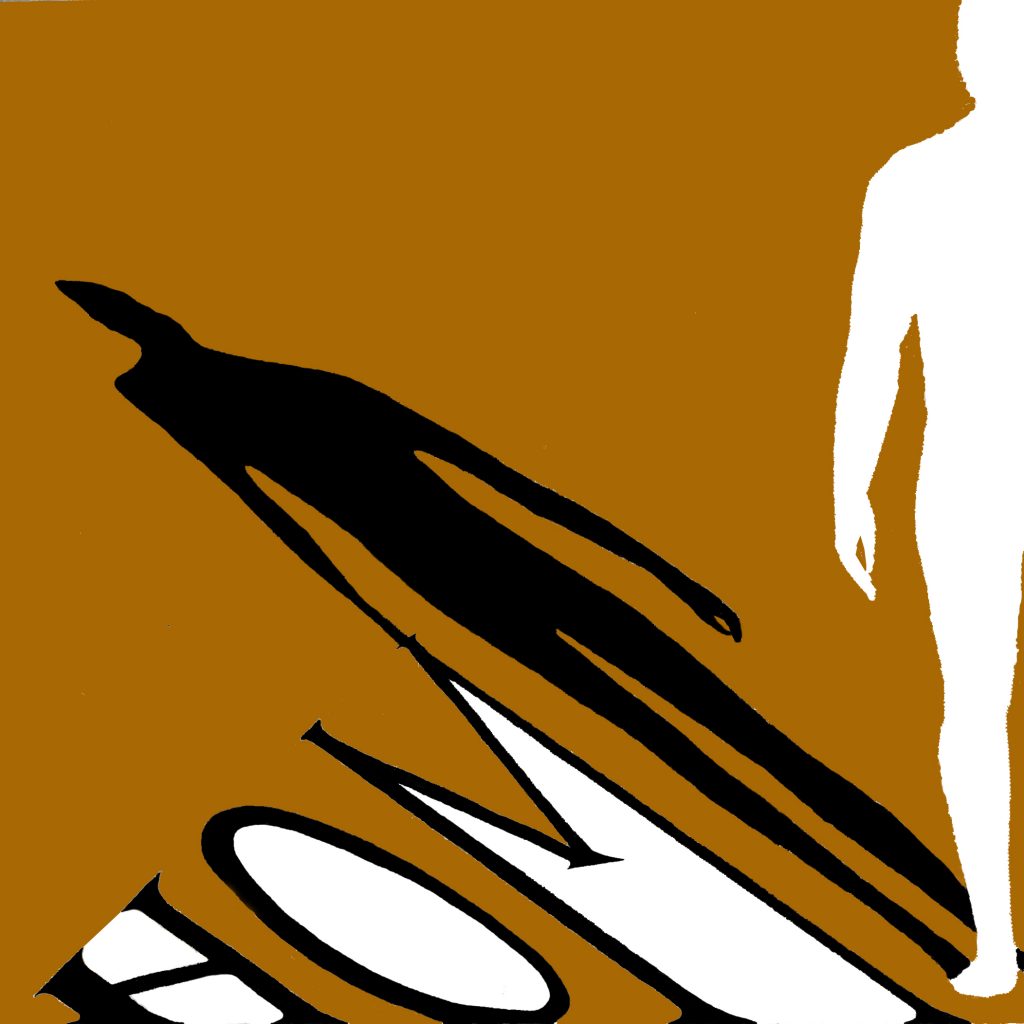April 20-22, 2022, KU Leuven
Plato and Aristotle disagreed about the value of mimetic representations, but they agreed that humans are mimetic animals—for good and ill. This ancient realization has long remained in the shadow of dominant translation of mimesis as aesthetic “representation” or realistic “copy” of reality, but there are a number of indications that a re-turn of attention to a more embodied, relational, contagious, and immanent conception of mimesis is now back on the critical and theoretical scene, animating most of the battles of the present that cast a shadow on an increasingly precarious future—from mass contagion to (new) fascism, conspiracy theories to viral contagion to hypermimetic simulations that have material effects on the planet, among other protean phenomena.
The ERC-funded project Homo Mimeticus: Theory and Criticism (HOM) hosted by the Institute of Philosophy and the Faculty of Arts at KU Leuven, Belgium, is pleased to announce its final international conference on April 20-22, 2022 (online). Furthering a re-turn of attention to mimesis HOM has been promoting over the past 5 years, this transdisciplinary conference is titled, The Mimetic Turn. Its general goal is to continue mapping the protean manifestations of mimesis (imitation, but also identification, contagion, performativity, simulation, mirror neurons, et al.) from a Janus-faced perspective that looks back to this concept’s genealogy to better look ahead to the challenges of the present and future. HOM’s overarching hypothesis is that from the linguistic turn to the ethical turn, the affective turn to the new materialist turn, the neuro turn to the posthuman turn to the environmental turn, there is a growing re-turn of attention to the ancient yet always new realization that humans are an all-too-mimetic species—or homo mimeticus. Register for FREE HERE.

In order to further the mimetic turn from a transdisciplinary perspective, HOM convoked internationally renowned keynotes and invited speakers to forge new connections between homo mimeticus and the posthuman (Rosi Braidotti), the planetary (William E. Connolly), vibrant matter (Jane Bennett), psychic fabrications (Mikkel Borch-Jacobsen), techne theory, (Herny Staten), conspiracy theories (Michael Butter), and embodied simulation (Vittorio Gallese).
Recordings: The Mimetic Turn Day 1
Nidesh Lawtoo: Introducing The Mimetic Turn
Michael Butter: Conspiracy Theories as a Mimicry
Henry Staten: Techne vs. Mimesis in Plato’s Republic
KEYONOTE I Mikkel Borch-Jacobsen: Plato on Facebook
The Mimetic Turn Day 2
Herman Siemens: Mimesis in Baumgarten and Nietzsche’s The Birth of Tragedy
William A. Johnsen: The Enigma (or the Third Pillar) in René Girard’s Violence and the Sacred
Matthew Potolsky: Verisimilitude. A Reintroduction.
KEYNOTE II: Vittorio Gallese: Narrative as a Body. Embodied Simulation and its Relationship with Fiction
The Mimetic Turn: Day 3
Sara Polak: Where is Waldo? Social Media after Trump
Greta Olson: Towards Decolonial Trans Feminist Womxn
Andrea Mubi Brighenti: Imitation, Metamorphosis, Becoming: A Comparative Social-Theoretical Sketch
KEYNOTE III: William E. Connolly: Arks at Sea, Arcs of Time
KEYNOTE DIALOGUE: Jane Bennett & Nidesh Lawtoo: From Homo Mimeticus to Trans-Specied Mimesis. A Dialogue
This project has received funding from the European Research Council (ERC) under the European Union’s Horizon 2020 research and innovation programme (grant agreement n°716181)


